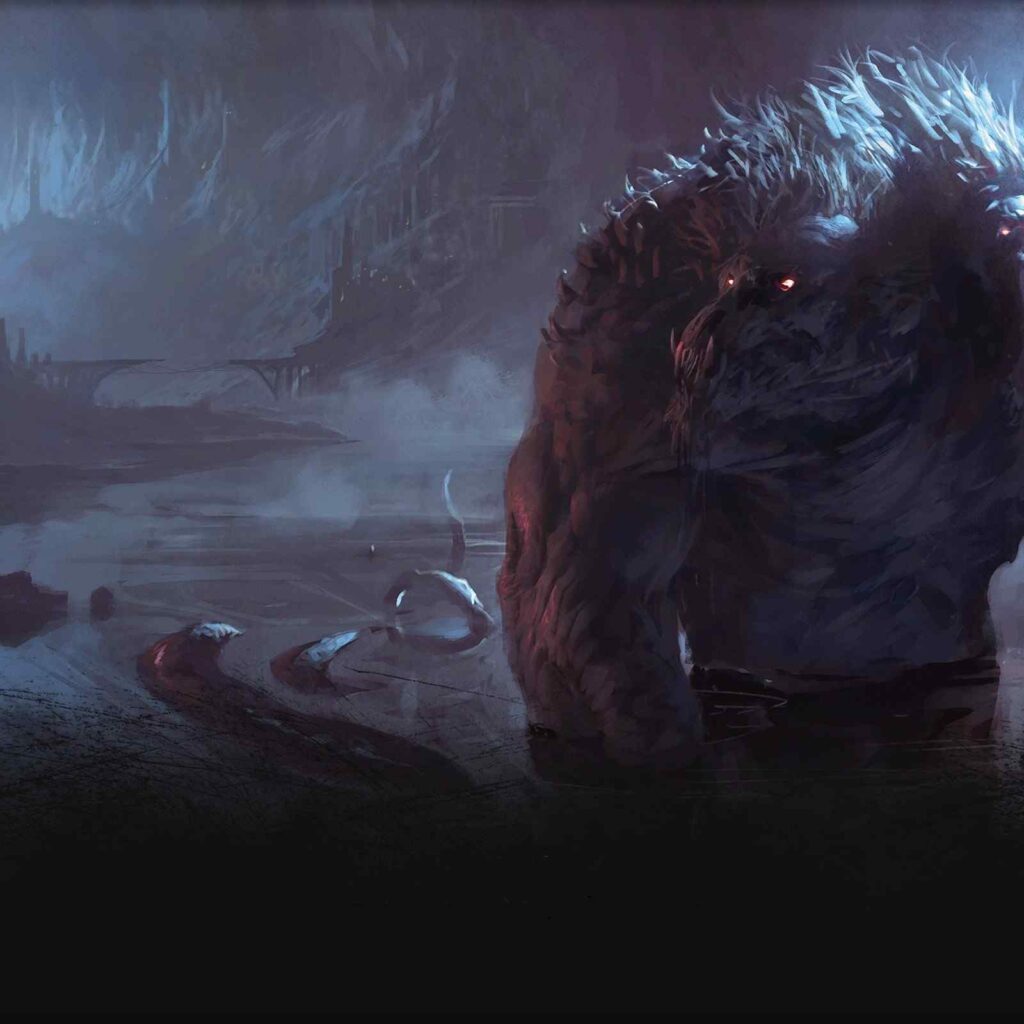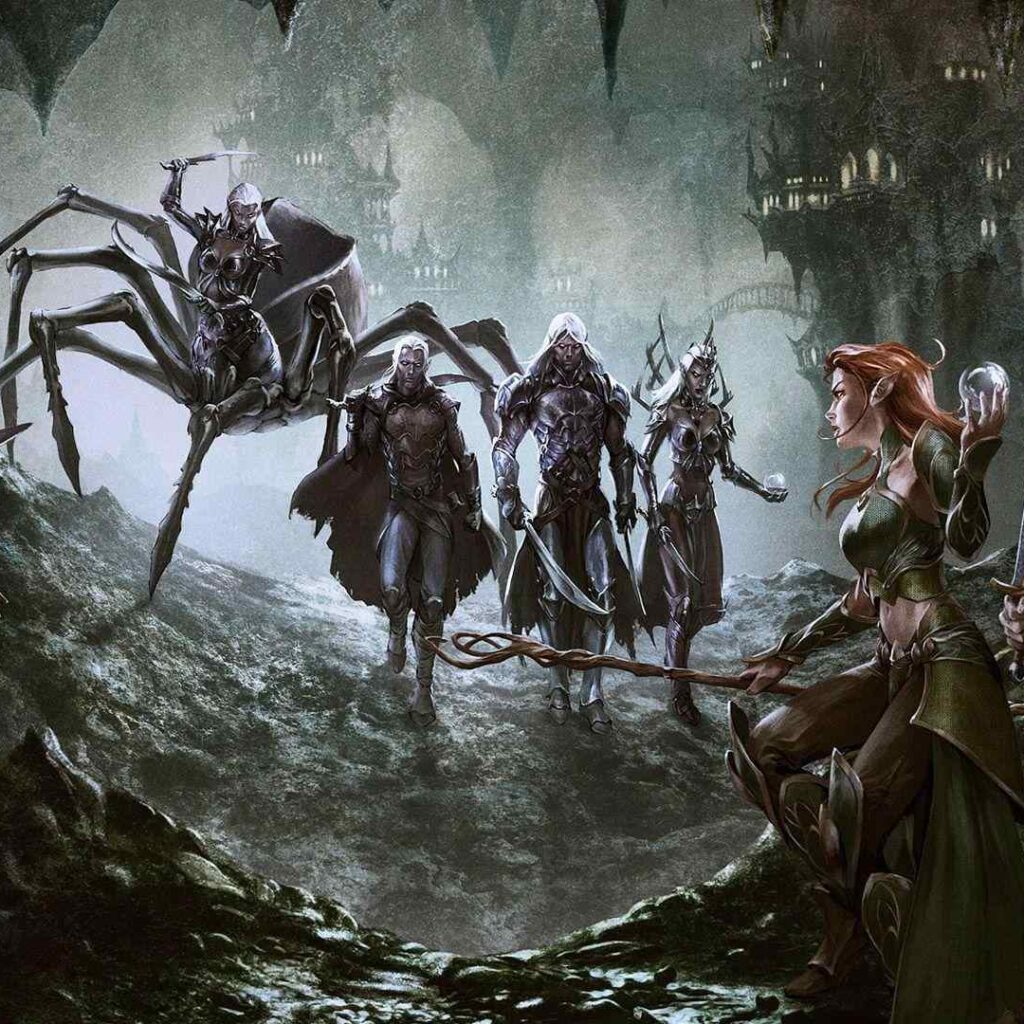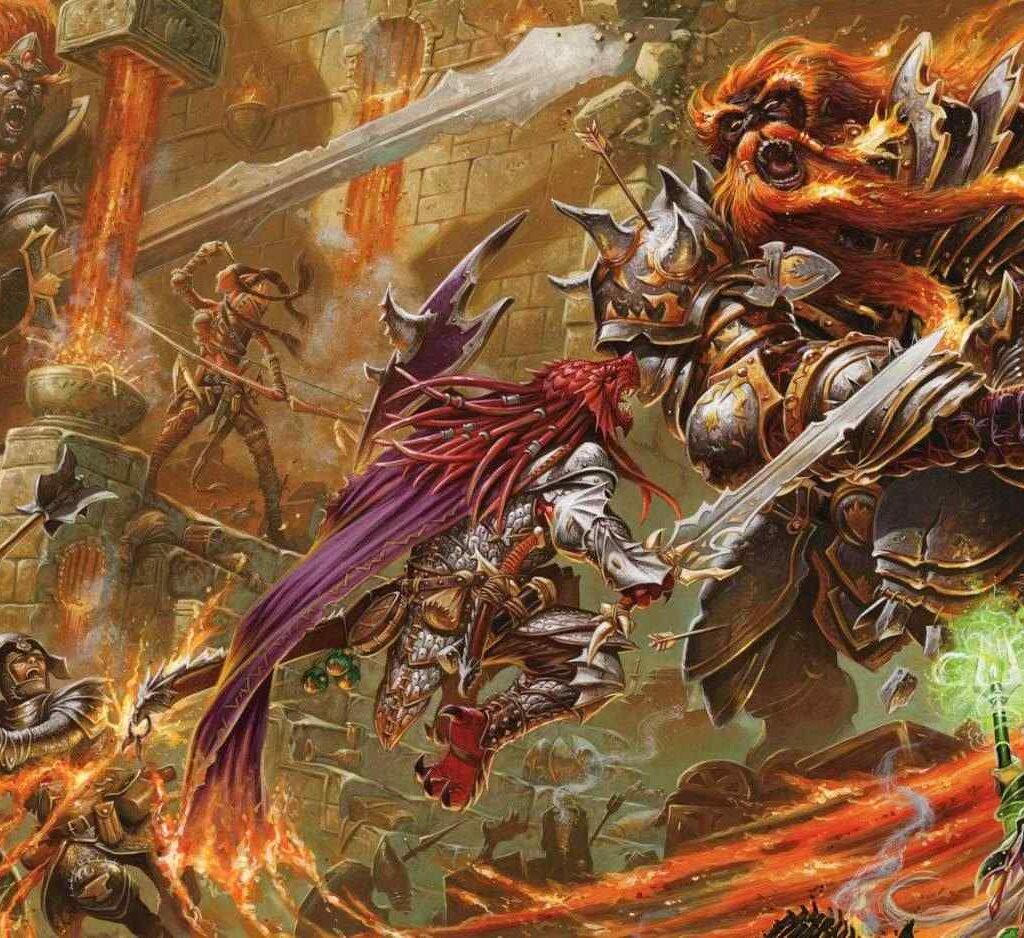Have you ever sat down to start a new Dungeons & Dragons campaign, only to realize that the group isn’t quite on the same page? Maybe one player envisions epic battles against dragons while another is more interested in political intrigue and diplomacy.
I’ve been there too, and trust me, it can lead to some awkward sessions as everyone tries to figure out what kind of game they’re playing.
That’s where Session Zero comes in – an opportunity for players and Dungeon Masters (DMs) alike to come together, discuss their expectations, and create a cohesive world before diving headfirst into the adventure.
In this article, we’ll be exploring the ultimate Session Zero checklist for DnD so that you can plan the perfect game tailored just for your group.
This way, everyone starts off with a clear understanding of their characters and each other’s play styles and preferences.
And who doesn’t want that kind of harmony at their gaming table? So grab your dice, find your favorite character sheet template or notebook, gather around with your fellow adventurers, and let’s dive into how to make your campaign kickoff truly memorable!
In a hurry? Here’s a quick & short answer that’ll help you out!
A comprehensive DnD session zero checklist should include discussing player expectations, character creation, campaign setting, house rules, playstyle preferences, and scheduling. Ensuring clear communication and establishing a group dynamic will pave the way for an enjoyable, engaging, and well-rounded roleplaying experience for all participants.
What Is A Session Zero?

Picture this: a group of excited adventurers huddled around a dimly lit table, armed with dice and character sheets, ready to embark on an epic journey through the mystical world of Dungeons and Dragons (DnD). But before they can take that first step into the unknown, there’s something crucial that needs to happen – Session Zero.
This essential pre-game gathering is where players and dungeon masters come together to lay the groundwork for their upcoming campaign.
In this section, we’ll delve into what makes Session Zero so important and provide you with an ultimate session zero checklist to ensure your DnD game gets off to a perfect start.
So, what exactly is a Session Zero? Think of it as the prologue to your story; it sets the stage for all of the thrilling action yet to unfold. During this time, players will create their characters while discussing backgrounds, motivations, and relationships within the party.
Dungeon Masters (DMs) will also use this opportunity to present vital information about their setting or homebrew rules specific to their campaign.
Essentially, Session Zero serves as both a collaborative brainstorming session amongst everyone involved in the game and critical foundation-building exercise. You might be thinking ‘why not just dive straight into playing?’
However, skipping Session Zero can lead to confusion among players and potential conflicts later down the line. By taking part in this preliminary meeting, you’re allowing yourself – whether you’re a player or DM – ample time to understand how each individual envisions their role within the adventure.
Plus, having open communication from day one helps establish expectations between everyone at the table – making sure no one feels left out or frustrated during gameplay. With our understanding of what constitutes a successful Session Zero now clear as daylight let us venture forth into uncharted territory – emphasizing its importance within any DnD campaign.
Importance Of Session Zero In Dnd
So, now that we know what a Session Zero is all about, let’s dive into its significance in the world of Dungeons and Dragons (DnD). A well-executed Session Zero can set the tone for an engaging and enjoyable campaign. It helps to establish game rules, character backgrounds, and group dynamics before diving headfirst into adventures filled with danger and excitement.
Why is it so important to conduct a Session Zero in DnD? For starters:
- Establishing game rules: Every player has their own interpretation of how they think the game should be played. By discussing house rules and clarifying any ambiguities during this session, you’ll avoid unnecessary conflicts later on.
- Creating cohesive backstories: Character creation goes beyond choosing race, class, and abilities; players need to develop their characters’ personalities and figure out how they fit together as a team. Collaborating during Session Zero allows everyone to create connections between their characters from the get-go.
- Setting boundaries: Ensuring everyone at the table feels comfortable is crucial for an enjoyable experience. Discussing sensitive topics or themes beforehand ensures no one crosses lines that could ruin someone else’s fun.
As your party embarks on thrilling quests through mysterious lands teeming with magic and monsters, remember that part of what makes DnD special lies in its cooperative storytelling nature. This shared responsibility demands respect for each other’s preferences and limits – something that becomes much easier once you’ve had a successful Session Zero under your belt.
Now armed with this understanding of why establishing game rules and setting expectations are so vital during Session Zero, let’s move forward by delving deeper into managing player expectations throughout your campaign!
1. Player Expectations

Picture this: you’ve gathered your group of intrepid adventurers, ready to embark on the journey of a lifetime. But before setting foot in the land of dragons and dungeons, it’s essential to have a heart-to-heart about everyone’s expectations for the game.
Establishing clear player expectations is like putting up strong pillars that will hold up the entire campaign – without them, everything might come crashing down.
Now’s the perfect time to discuss any character creation tips or preferences your players may have. Are they itching to play specific races or classes? Is there room for homebrew content?
The more transparent everyone is about their desires and boundaries during character creation, the better equipped you’ll be as Dungeon Master (DM) to guide them through an immersive experience tailored just for them.
Don’t forget to address group dynamics too! A solid foundation built by understanding each other’s limits and goals will go a long way when conflicts arise in-game. Discuss how much emphasis should be placed on serious role-playing versus casual banter, whether PvP combat is allowed or not, and if there are any sensitive topics or themes that should remain off-limits throughout the campaign.
It’s crucial that every adventurer feels comfortable sharing their thoughts so that everyone can enjoy themselves at the table. And now that we’ve laid out these groundwork principles, let’s dive into creating those unforgettable characters who’ll face challenges together and forge lifelong bonds within your epic tale.
2. Character Creation
Alright, let’s dive into character creation! This is one of the most exciting parts of a Dungeons & Dragons game because it’s where you get to create your own unique hero.
Your character will be an extension of yourself in the world we’re building together, so take some time to think about who they are and what drives them. To help with this process, I’ve got some tips that’ll make creating your character as fun and engaging as possible.
First things first: have a chat with me about the campaign planning. What kind of storyline or setting do I have in mind? Knowing this information can help inspire ideas for your character’s background and motivations.
You should also consider how your character fits within the party dynamic; collaboration is key when adventuring through dangerous lands filled with monsters and mayhem!
Now that you know what kind of journey lies ahead, let’s talk world-building guidelines. Immersing yourself in our collaborative fantasy universe means understanding its cultures, factions, races, and classes available for characters.
Do you want to play a noble elf paladin? A sneaky halfling rogue? Or maybe something more unconventional like a goblin bard? Think about which race/class combination best represents the story you want to tell and contributes to our collective narrative.
You’ve selected your race and class – awesome! But don’t forget about those finishing touches that really bring your character to life: backstory, personality traits, goals, flaws…the list goes on!
Flesh out these details so that not only does your character feel real but also has reasons behind their actions during gameplay. The more thought put into crafting these aspects, the richer both individual experiences as well as group dynamics become.
With all this work done on developing your D&D persona (and trust me – it’ll pay off), it’s time to move on to exploring our thrilling campaign setting where your character will embark on daring adventures, unravel mysterious plots, and forge unforgettable bonds with fellow heroes in a world full of magic, danger, and endless possibilities.
3. Campaign Setting

Now that we’ve got our characters ready to embark on their epic journey, it’s time to dive into the world they’ll inhabit. Crafting a campaign setting is an essential part of any great DND session zero. This will help set the stage for your players and give them a better understanding of the environment in which they’re adventuring.
To start creating your captivating campaign setting, follow these three steps:
- Choose a theme or genre: Decide whether you want your campaign to be high fantasy, dark horror, steampunk, or something else entirely.
- Develop key locations: Flesh out various cities, towns, dungeons, and landmarks that will serve as backdrops for your players’ escapades.
- Populate with NPCs: Create interesting non-player characters who can offer quests, information, or assistance (and perhaps some hindrances) throughout the story.
As you work on developing this fantastical realm, make sure to involve your players in the process! Encourage them to contribute ideas about their characters’ hometowns and personal connections within the world.
Not only does this collaboration create a richer gaming experience but also helps foster even deeper character immersion by tying their backstories directly into the world around them.
With a strong foundation now built from engaging characters and an enthralling campaign setting, there’s one more thing left to address before diving headfirst into an adventure – house rules. Let’s move on to establishing those crucial guidelines to keep everyone playing fair and having fun along the way!
4. House Rules
Now that we’ve got the basics covered, let’s talk about house rules.
I personally believe that house rules are essential to tailor the game experience to fit your specific group of players. Remember, D&D is a flexible system and it’s totally okay to tweak some aspects as long as everyone at the table agrees.
One thing you can do is sit down with your players before starting the campaign and have an open discussion about any particular rule changes or additions they’d like to see in play. You might be surprised by what comes up!
Some groups prefer implementing critical fumble tables for added hilarity when a natural 1 is rolled, while others may want to adjust how resting works to better suit their desired level of challenge.
Another important aspect of house rules is addressing character death and resurrection. Let’s face it – nobody likes losing their beloved character. But sometimes, it just happens. It’s crucial to discuss how your group wants to handle this sensitive topic beforehand so there are no surprises later on.
Will you allow characters to be resurrected easily using spells or other means? Or will coming back from the dead require special quests or unique circumstances? Make sure everyone knows what they’re signing up for.
Lastly, consider discussing any homebrew content that you or your players would like to include in the game – custom races, classes, feats, etc.
This adds another layer of customization and fun but also requires clear communication between all parties involved about balance and expectations.
With these house rules established upfront, you’ll create a smoother gameplay experience tailored specifically for your party members’ preferences.
Next up: delving into playstyle preferences and making sure everybody gets their time in the spotlight!
5. Playstyle Preferences

We all know that every player has their own unique way of enjoying the game. Some folks love delving deep into character development and roleplaying, while others are all about hack-and-slash combat and looting treasure.
By discussing each person’s preferred playstyle in advance, you’ll be able to craft a story that caters to everyone’s tastes.
Don’t worry if your group isn’t made up of mind-readers – that’s where communication comes into play! During your session zero chat, make sure to ask each player what type of gameplay they enjoy most.
Are they looking for an immersive world filled with political intrigue? Or do they just want to kick down doors and slay monsters? Knowing these details will help tailor your campaign so it hits all the right notes.
Remember: The goal is to provide everyone with fun experiences they won’t forget!
In addition to individual preferences, consider how different styles can complement one another within the narrative. For example, adding elements of exploration or puzzle-solving can break up stretches of intense combat encounters or vice versa.
This balanced approach not only keeps things fresh but also allows players to shine when their favorite aspect comes into focus.
So after hashing out those playstyles and finding the perfect blend for your group dynamic, you’re now ready for the next piece of this D&D puzzling extravaganza—scheduling!
And we all know coordinating calendars can be as tricky as navigating a beholder-infested labyrinth, so stay tuned for tips on tackling that challenge next.
6. Scheduling
Now that you’ve got a better grasp on everyone’s playstyle preferences, it’s time to tackle another crucial aspect of any successful D&D campaign: scheduling.
As we all know, life can get busy, and finding the perfect time for every player is no easy task. But worry not! We’ll guide you through some steps to ensure your group finds the best possible schedule.
First things first – communication is key when planning sessions. Make sure everyone in your group has an accessible means of staying connected and discussing availability. A shared calendar or dedicated group chat goes a long way towards keeping everyone informed and accountable.
When deciding on dates and times, consider:
Weekdays vs. weekends
Pros
- Some people have more stable schedules during weekdays.
- Players might be less likely to cancel at the last minute.
Cons
- Work, school, and other obligations may interfere with weekday games.
- People may be too tired after a day of work or study.
Daytime vs evening sessions
Pros
- Daytime games may offer longer playing hours without interfering with bedtime routines.
- It could be easier for players from different time zones to join daytime sessions.
Cons
- People are often busier during regular business hours.
- Evening sessions allow players to unwind after their daily responsibilities.
Next up, establish how frequently you’d like your game sessions to occur – weekly, biweekly or monthly? Consider each player’s personal commitments as well as how much preparation time the Dungeon Master will need between games.
Though scheduling can seem daunting at first glance, remember that flexibility is essential for maintaining harmony within your gaming group. Understandably, real-life events or emergencies might require rescheduling now and then, so don’t stress about needing occasional adjustments.
The most vital part is open communication among all members about changes in availability so that nobody feels left out or overwhelmed by the process.
With these tips in mind, you’ll have a perfectly planned game that everyone can eagerly anticipate!
Conclusion
In the end, my fellow adventurers, a well-crafted Session Zero is like a finely tuned compass guiding us through the uncharted territories of our collective imaginations.
It sets the stage for epic stories to unfold and memorable characters to come alive before our very eyes.
So gather your party, stoke the fires of creativity, and embark on an unforgettable journey into the fantastical world of Dungeons & Dragons with a perfectly planned Session Zero as your steadfast ally.
Happy adventuring!






